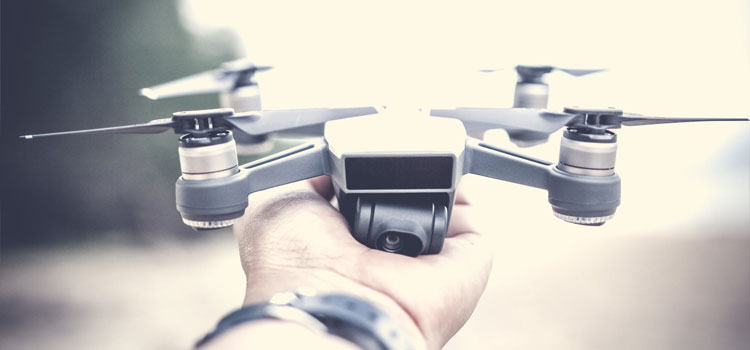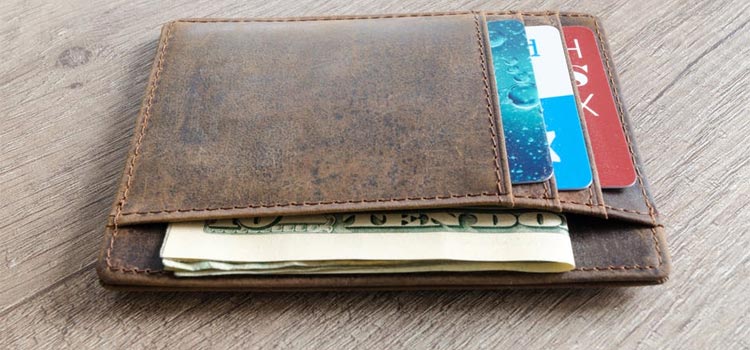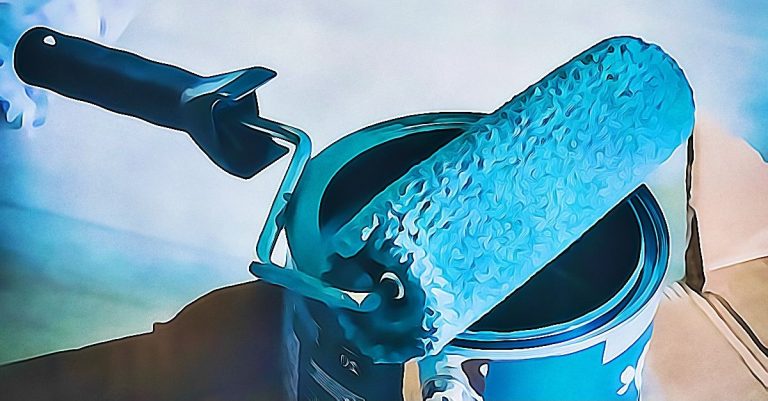From military to recreational to commercial use, drones have plenty of applications. Thus, drone pilot jobs are increasingly becoming in demand.
- Inbox Dollars - Get paid to check your email. $5 bonus just for signing up!
- Survey Junkie - The #1 survey site that doesn't suck. Short surveys, high payouts, simply the best.
- Nielsen - Download their app and get paid $50!
Before 2006, the use of drones or UAVs (for unmanned aerial vehicles) was mainly for military applications, such as surveillance, decoy, and weapon.
The Federal Aviation Administration (FAA) issued its first commercial drone permit, and both the government and private companies used drone technology for various applications.
Later on, personal and recreational drones became big, as cheaper versions of drones without the sophisticated software and sensors required by commercial drones became available for amateurs.
Today, both consumer and commercial drones are increasingly used for several applications in multiple industries.
Along with that increase in demand is a growing need for pilots to operate them. Just because they’re unmanned doesn’t mean they don’t need humans to operate them (unless they’re automated drones, but that’s for another article).
In this article, I’ll discuss how to be a drone pilot and what drone pilot jobs are out there.
How to Become a Professional Drone Pilot
Flying a drone requires very specific skills, training, and certification, which all costs money. If you’re determined to succeed, though, your earnings should exceed your investment.
Education
Even if you know how to fly a drone recreationally, it’s still wise to take drone courses, especially if you find courses that are specific to the industry that you’re interested in working.
Some of the schools or learning institutions can even assist you with getting your FAA certification.
A simple Google search will pull up many results, but here are some of the recommended ones:
- Drone Pilot Ground School
- Pilot Institute
- Drone Pilot Training Center
- Drone Flight Training Classes | UAV Coach
Equipment
Freelancers must provide their own drones for their services. This is not a simple purchase; a quality commercial drone can cost at least $2,000. If you’re looking for a trusted brand, there’s nothing better than DJI, hands down.
You’ll also have to download drone apps to your smartphone as well as software on your computer.
Some drone accessories that are useful in commercial applications include an extra controller, shade, extra batteries, GPS tracker, emergency tool kit, extra data storage, and bags or backpacks to house your drone.
Certification and Registration
Around 99% of the time, drone pilot jobs require you to have a commercial drone license; that is, if you stand to profit from flying your drone, the FAA has to sign off on it.
For first-time pilots applying for what’s called a Part 107 License, you would need to be at least 16 years old, able to read, write, speak, and understand English, and physically and mentally fit to safely fly a drone.
Take the aeronautical knowledge test (“Unmanned Aircraft General – Small (UAG)”) in one of the FAA’s approved testing centers. Once you pass that, apply for a remote pilot certificate, which will be sent both digitally and physically to you.
Afterward, if you’re going to fly your own drones, you’ll need to register them with the FAA, and you need to mark the drones with the registration numbers.
For more details, read the complete information on the FAA website.
How much can a Drone Pilot make?
Full-time drone pilots can make anywhere from $58,000 to $96,000 a year.
No joke. Here are the fastest ways to make easy money online. Click here to see how.
The money you can make as a drone pilot depends on several things, including what industry you’re in, how much time you spend marketing your services, the quality of your work, your reputation, and many more.
Freelancers have more flexibility when charging clients.
If you were contracted to take drone photos, you can get paid from $70 to $250 per picture. Mapping, inspection, deliveries, or search and rescue fees are usually set on a case-to-case basis.
But this can still depend on your client.
For example, real estate agencies getting a drone shot of a million-dollar property can bank higher than other gigs. In most cases, you’ll be able to charge higher from corporate clients than from the government or from individuals.
Industries That Offer Drone Pilot Jobs
1. Filmmaking
This is probably the most familiar way that drones are used.
If you’ve ever watched a film in the last five years that starts with an aerial view of a town or scenery, that shot was probably made by a drone.
It’s a bit hard to break into the film industry if you’re not connected or if you don’t live in LA or New York, but send in your resume to production companies, both the big ones and the smaller indie ones, include a demo reel of aerial shots you’ve done, and you may just have an in.
Alternatively, you can go into amateur filmmaking, especially for events such as weddings. You’d be surprised at how many couples would like an aerial shot of the wedding venue (the church, garden, or beach) and the reception in their video.
2. Real Estate
UAVs have been providing realtors with a new perspective that hasn’t been possible before. With aerial videos, still photos, and 3D maps created from data captured by drones, potential buyers can now get a comprehensive view of the property they’re considering buying.
3. Journalism
News helicopters used to be the norm when covering news from an aerial perspective, such as traffic situations, disasters, or wide-scale attacks.
Nowadays, news organizations are using drones to lessen the human risk, the cost, and interference to the scene.
Depending on FAA regulations and what your license allows you to do, you may even be able to cover demonstrations, sports events, and events that have crowds
4. Building and Infrastructure Inspection
Drones are also great as tools for inspection of hard-to-reach areas, such as communication towers, bridges, wells, rooftops, and chimneys of everything from houses to skyscrapers, cables, remote stations and so much more.
Safety inspections, ironically, can be dangerous for the people who normally do this job, so having a drone do the inspection of structures that are on precarious heights.
5. Construction and Mining
Surveying potential and ongoing construction sites used to cost a lot, in terms of both money and time.
UAVs are now used to conduct aerial surveys over a large area to collect photographic and GPS data, which are then processed in specialized computer software to create a digital 3D map of the area.
Once this information is available, those in charge can now decide where they can or can’t start construction.
Mines and quarries do the same thing where they survey a digging site and decide where to dig and where to stockpile materials. They can also determine the volume of a stockpile from the information they gathered.
You can make money from home and it doesn't have to be challenging. Click here to see how.
6. Insurance
Insurance companies are using drones more and more to assess insurance claims for property damage, whether it’s because of fire, weather, or water damage.
Not only does it take longer for manual inspections, but the site can also be a dangerous place to be due to structural damage and the aftermath of what caused the damage.
7. Energy
Wind farms, pipelines, and solar panels are massive and can cost a lot to inspect and troubleshoot. The trans-Alaska pipeline, for example, runs 800 miles. A single leak along those 800 miles can result in environmental damage and financial loss.
Drones with thermal cameras can go along the pipeline and detect leaks and weak spots along the pipeline much cheaper than using a helicopter.
Wind farms, on the other hand, have plenty of turbines, which can rise up hundreds of feet off the ground. Inspecting by helicopter can be impractical here, and drones can do a much better job.
8. Agriculture
You can work with farmers to improve their crop yields by flying a UAV to take photos of their crops and identify which areas need attention.
You can also set up pest-control, irrigation, and crop-planting strategies using mapping and imaging technologies in drones.
9. Search and Rescue
As far as drone pilot jobs go, this may be one of the high-stakes ones but also one of the most rewarding.
At the scenes of accidents or natural disasters, some areas may not be easily accessible by humans and makes search and rescue highly difficult.
Police and fire departments can use drones to survey an inaccessible area to locate people in need of help and divert resources much more efficiently.
While often a voluntary position, you can find search and rescue employment with the government, Red Cross, and other organizations.
10. Package Delivery
Drone delivery is being developed as the next big thing in ecommerce, but the sheer volume of orders would likely crowd residential airspaces, which is not an ideal situation.
Amazon first announced Prime Air in 2013 but hasn’t rolled it out completely.
Some of the companies currently doing this in a limited capacity include DHL, Wing, and Zipline.
Non-profit organizations, hospitals, institutions, and other private companies have been incorporating drone deliveries to clients located in areas hard to reach by vehicles.
However, handling delivery drones is a bit different, since the equipment is more heavy-duty than regular photography drones to be able to carry loads seamlessly.
11. Security
Professional security agencies have explored drones as a surveillance tool, especially in wide areas.
While drones cannot shoo trespassers on the spot, video capture can help in monitoring or documenting multiple areas at a time.
Drones are also being used in private investigations, making it safer for people in the security and surveillance industries to do their jobs. And because drones today can have thermal imaging, HD videos, and other advanced features, drones can survey an area even at a distance and still reach the intended target.
12. Law Enforcement
Drones are useful for tactical operations when stealth is needed, such as pursuing an active shooter in a wooded area or in a crowded building.
Border protection agents can also use drones to monitor a wide area of land, sea, and airspace to detect and track unauthorized vehicles, ships, aircraft, and persons.
These are high-risk operations and thus require great skills from the drone pilot.
The mapping capabilities of some drones also help in crime scene mapping, when evidence is spread over a wide area and criminologists want to study how evidence was dispersed.
You can find drone pilot jobs in both local and federal police bureaus, as well as through the US Customs and Border Protection website.
Other Places To Find Drone Pilot Jobs
There are networks and job boards that are specific to drone pilots of varying skills, experience, and expertise. Here are some of the websites you can check out.
- DroneBase — Sign up as a pilot and get tons of opportunities to fly drone missions for clients near you.
- Droners.IO — Network of commercial pilots, probably the world’s largest. Allows those who need drone pilots to post jobs on their website where pilots can bid on them.
- DroneHive — To sign up to be a drone pilot with them, you need to be able to fly a DJI rotocopter with 20mp sensor. Works with many large corporations.
- Hire UAV Pro — Connects companies to professional pilots worldwide.
Alternatively, you can go into Google or general job boards and search for “drone pilot jobs,” “UAV operator jobs,” or “UAV pilot jobs.”
The Future of Drone Pilot Jobs: Your Own Business
The drone pilot jobs you can get hired for are mostly on a freelance basis.
However, if you branch out on your own and start growing a fleet of drones, you open up more earning possibilities and maybe even hire a team of your own drone pilots to operate your drones.
You can choose from the industries I’ve listed above or you can find your own niche. Either way, the potential business opportunities are extensive. In fact, a recent report by Research Dive found that the global UAV drone market is expected to grow to around $55.65 million by 2027.
The Bottom Line
Drones do work with a sophisticated remote control, but it doesn’t mean everyone who has had video game practice can do this.
Flying drones is still a unique skill and the drones themselves aren’t cheap, so you’d have to be careful with your equipment while mastering how to fly.
Now that you know how to make money with a drone, you’d have to practice religiously and learn everything you can about the local and state laws of flying drones. Generally, the FAA is the authority of all things flying over the skies, but this agency also won’t save you if your drone flying ways break local or state laws.
Whether you’re going to do this as a freelancer or set up a business around drones, make sure you give leeway for maintenance (or replacement). Track the drone’s mileage and prepare money for emergencies (missing/damaged drones).
If you’re really interested in flying drones as a way of income, you have to understand that this isn’t an easy way to make money. You do have control over how far you want to scale this business and since the market isn’t saturated yet, there’s a chance you can break into a niche industry that nobody hasn’t thought of yet.
Do you know how to fly drones? Do any of these drone pilot jobs sound interesting to you? Tell us in the comments!





